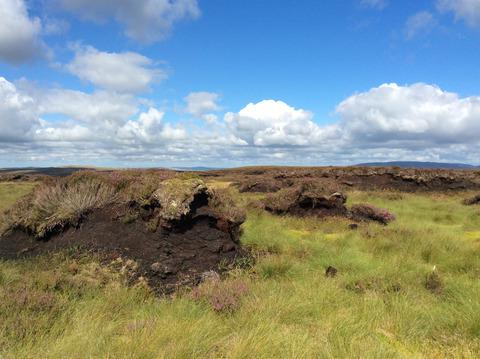Our official English website, www.x-mol.net, welcomes your feedback! (Note: you will need to create a separate account there.)
A regime shift from erosion to carbon accumulation in a temperate northern peatland
Journal of Ecology ( IF 5.5 ) Pub Date : 2020-06-20 , DOI: 10.1111/1365-2745.13453 Alice M. Milner 1 , Andy J. Baird 2 , Sophie M. Green 3 , Graeme T. Swindles 4, 5 , Dylan M. Young 2, 6 , Nicole K. Sanderson 3, 7 , Madeleine S. I. Timmins 1 , Mariusz Gałka 8
中文翻译:

在温带北部泥炭地政权从侵蚀转移到碳积累
更新日期:2020-06-20
Journal of Ecology ( IF 5.5 ) Pub Date : 2020-06-20 , DOI: 10.1111/1365-2745.13453 Alice M. Milner 1 , Andy J. Baird 2 , Sophie M. Green 3 , Graeme T. Swindles 4, 5 , Dylan M. Young 2, 6 , Nicole K. Sanderson 3, 7 , Madeleine S. I. Timmins 1 , Mariusz Gałka 8
Affiliation

|
- Peatlands are globally important ecosystems but many are degraded and some are eroding. However, some degraded peatlands are undergoing apparently spontaneous recovery, with switches from erosion to renewed carbon accumulation—a type of ecological regime shift.
- We used a palaeoecological approach to investigate and help understand such a switch in a blanket peatland in North Wales, UK.
- Our data show: (a) a rapid accumulation of new peat after the switch from the eroding state, with between 5.2 and 10.6 kg/m2 carbon accumulating since the beginning of the recovery which occurred between the late 1800s and early to mid‐1900s CE, with an average carbon accumulation rate in the new peat between 46 and 121 g C m−2 year−1; (b) three main successional pathways in peat‐forming vegetation and (c) hydrological changes with an increase to moderately high water‐tables after the switch that promoted new carbon accumulation as well as protecting vulnerable old carbon. External factors, including changes in climate and industrial activity, can only partially explain our results. Following previous studies, we suggest that internal ecosystem processes offer a substantial part of the explanation and interpret the switch to renewed carbon accumulation as a bifurcation‐type tipping point involving changes in the physical form of the eroded landscape.
- Synthesis. Our long‐term ecological data reveal a switch from a degraded peatland with active erosion and loss of carbon to a revegetated, wetter peatland accumulating carbon. The switch can be interpreted as a bifurcation tipping point. We suggest that external factors such as climate and pollution levels are important for setting suitable boundary conditions for peatland recovery, but internal mechanisms can explain the change in peatland state. Our study is the first of its kind to apply tipping point theory to the internal mechanisms linked to peat erosion and recovery and may help improve understanding of the trajectories of other peatlands in a changing climate.
中文翻译:

在温带北部泥炭地政权从侵蚀转移到碳积累
- 泥炭地是全球重要的生态系统,但许多土地已经退化,有些正在受到侵蚀。但是,一些退化的泥炭地显然正在自发恢复,从侵蚀转为新的碳积累,这是一种生态制度转移。
- 我们使用了古生态学方法来调查和帮助了解英国北威尔士一处毯子泥炭地的这种转变。
- 我们的数据显示:(a)从侵蚀状态转换后,新泥炭迅速积累,自恢复开始以来(在1800年代末至1900年代初至中期),积碳量为5.2至10.6 kg / m 2。 CE,新泥炭中的平均碳累积率在46和121 g C m - 2 年-1之间; (b)形成泥炭的植被的三个主要演替途径,以及(c)转换后水位增加到中等高的地下水位,这促进了新碳的积累并保护了脆弱的旧碳。外部因素,包括气候和工业活动的变化,只能部分解释我们的结果。根据先前的研究,我们建议内部生态系统过程提供大部分解释,并将向新的碳积累的转变解释为分叉型的临界点,涉及侵蚀景观的物理形式的变化。
- 综合。我们的长期生态数据表明,退化的泥炭地已从活跃的侵蚀和碳流失转变为植被恢复的湿润的泥炭地,积碳。开关可以解释为分叉临界点。我们建议,气候和污染水平等外部因素对于为泥炭地恢复设定合适的边界条件很重要,但是内部机制可以解释泥炭地状态的变化。我们的研究是首次将临界点理论应用于与泥炭侵蚀和恢复相关的内部机制,并且可能有助于增进人们对气候变化中其他泥炭地运动轨迹的了解。

























 京公网安备 11010802027423号
京公网安备 11010802027423号